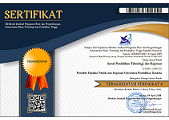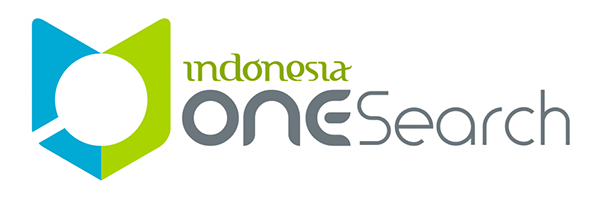INTEGRASI TEKNOLOGI PENGINDERAAN JAUH DAN MACHINE LEARNING PADA WEB GIS UNTUK PEMETAAN POTENSI BANJIR
DOI:
https://doi.org/10.23887/jptkundiksha.v22i1.87455Keywords:
Satelite Imagery, Google Earth Engine, Random Forest, Web GISAbstract
Flooding is a natural phenomenon that has frequently posed significant challenges in various regions of Indonesia, driven by factors such as rainfall, river conditions, upstream landscapes, land use patterns, and sea-level rise. These events often lead to severe consequences, including the spread of waterborne diseases, destruction of infrastructure, depletion of natural resources, and economic disruption. One proactive measure to mitigate such impacts is mapping potential flood risk areas. This study utilized Landsat 8 satellite imagery Level 2, Collection 2, Tier 1 processed on the Google Earth Engine (GEE) platform to derive indices such as the Digital Elevation Model (DEM), Topographic Position Index (TPI), Normalized Difference Vegetation Index (NDVI), and Normalized Difference Water Index (NDWI). These indices served as input variables for a Random Forest model, classifying areas into high, medium, and low flood risk categories. The developed model achieved 86% accuracy when evaluated using a confusion matrix, with precision, recall, and F1-score metrics validating its performance. The integration of this model into a WebGIS service was implemented through Flask, offering an API that supports real-time flood risk data retrieval by third-party applications. The front-end interface, built using LeafletJS, provides an interactive and user-friendly map visualization of flood risk levels. The results demonstrate that the Random Forest model effectively classifies flood risk, while the WebGIS service offers a practical tool for visualizing and disseminating flood risk information. This service has the potential to support disaster management efforts and enhance community preparedness against flooding.References
Dedi Hermon, “Geografi Bencana Alam.” Accessed: Feb. 24, 2024. [Online]. Available: https://books.google.co.id/books?hl=en&lr=&id=GgDeEAAAQBAJ&oi=fnd&pg=PA1&dq=buku+dedi+hermon+Geografi+Bencana+Alam&ots=8KozWt7w5U&sig=w6x-iveSZrEiZ-7SZ4d4UstuCfo&redir_esc=y#v=onepage&q&f=false
Dino, “Banjir: Pengertian, Penyebab, dan Dampaknya,” web.bpbd.jatimprov.go.id. Accessed: Feb. 24, 2024. [Online]. Available: https://web.bpbd.jatimprov.go.id/2023/10/19/banjir-pengertian-penyebab-dan-dampaknya/
B. E. Cahyono, E. Ikke, S. Putri, and A. T. Nugroho, “Pemetaan Daerah Genangan Banjir dan Keterkaitan dengan Penggunaan Lahan , Jenis Tanah dan Curah Hujan di Kabupaten Konawe Utara Flooded Area Mapping and Its Relationship to the Land Use , Soil Type , and Rainfall in North Konawe Regency,” vol. 23, no. 2, pp. 93–100, 2022.
A. Sukmono, A. L. Nugraha, M. Awaluddin, F. Janu, and S. D. Kirana, “Pendampingan Penyusunan Peta Kelurahan Berbasis WebGIS Untuk Penunjang Pembangunan Bagi Pemerintah Kelurahan Rowosari , Kota Semarang,” vol. 4, no. 1, pp. 21–28, 2021.
G. E. Engine, “Meet Earth Engine.” Accessed: Feb. 26, 2024. [Online]. Available: https://earthengine.google.com/
Tarubali, “Sekilas Bali,” tarubali.baliprov.go.id/. Accessed: Feb. 26, 2024. [Online]. Available: https://tarubali.baliprov.go.id/sekilas-bali/
Pusdalops, “Informasi Bencana Bulanan Provinsi Bali Periode 1 Januari - 25 Februari 2023,” bpbd.baliprov.go.id. Accessed: Apr. 20, 2024. [Online]. Available: https://bpbd.baliprov.go.id/article/2933/informasi-bencana-bulanan-provinsi-bali-periode-1-januari-25-februari-2023
Pusdalops, “Informasi Bencana Bulanan Provinsi Bali,” bpbd.baliprov.go.id. Accessed: Apr. 20, 2024. [Online]. Available: https://bpbd.baliprov.go.id/article/3182/informasi-bencana-bulanan-provinsi-bali
N. Sugandhi and H. Rakuasa, “Utilization of Geogle Earth Engine for Flood Hazard Analysis in DKI Jakarta Province,” vol. 1, no. 02, pp. 41–49, 2023.
B. Laurensz, F. Lawalata, and S. Y. J. Prasetyo, “Potensi Resiko Banjir dengan Menggunakan Citra Satelit (Studi Kasus : Kota Manado, Provinsi Sulawesi Utara),” 2019.
A. Y. Isnaen and S. Y. J. Prasetyo, “Klasifikasi Wilayah Potensi Risiko Kerusakan Lahan Akibat Bencana Tsunami Menggunakan Machine Learning,” vol. 8, no. April, pp. 33–42, 2022.
M. V. A. Wadud, E. Hermawan, and N. Kamilah, “Analisis Pola Distribusi Spasial Perubahan Penggunaan Lahan Dan Urban Heat Island Menggunakan Google Earth Engine,” vol. 9, no. 1, pp. 259–269, 2023.
N. E. Kın, “Statistics of Confusion Matrix.” Accessed: Feb. 28, 2024. [Online]. Available: https://medium.com/machine-learning-türkiye/statistics-of-confusion-matrix-d762eaf53f74
A. N. Fauziah, “ANALISIS SENTIMEN MENGGUNAKAN NAÏVE BAYES CLASSIFIER DAN INSET LEXICON PADA TWITTER ( Studi Kasus : Mie Gacoan ) PADA TWITTER ( Studi Kasus : Mie Gacoan ),” 2023.
M. S. Anggreany, “Confusion Matrix,” socs.binus.ac.id/. Accessed: Feb. 27, 2024. [Online]. Available: https://socs.binus.ac.id/2020/11/01/confusion-matrix/
Ramadhan, Indonesia. Flood Hazard Mapping in Earth Engine, (2023). [Online]. Available: https://www.youtube.com/watch?v=35-YGQzxSzE&list=LL&index=13&t=26s
T. Mahesti, K. D. Hartomo, S. Yulianto, and J. Prasetyo, “Penerapan Algoritma Random Forest dalam Menganalisa Perubahan Suhu Permukaan Wilayah Kota Salatiga,” vol. 6, pp. 2074–2085, 2022, doi: 10.30865/mib.v6i4.4603.
J. Hu and S. Szymczak, “A Review on Longitudinal Data Analysis with Random Forest,” vol. 24, no. January, pp. 1–11, 2023.
M. Habibi, “Definisi, Komponen dan Manfaat Remote Sensing,” www.technogis.co.id. Accessed: Apr. 20, 2024. [Online]. Available: https://www.technogis.co.id/definisi-komponen-dan-manfaat-remote-sensing/
A. Juantoro and N. Ratama, “Sistem Notifikasi Monitoring Server Pada BOT Telegram Menggunakan Cronjob Berbasis Web ( Studi Kasus : PT . Ekanuri Group ),” vol. 1, no. 12, pp. 2346–2351, 2022.
Downloads
Published
Issue
Section
License
Authors who publish with the JPTK agree to the following terms:- Authors retain copyright and grant the journal the right of first publication with the work simultaneously licensed under a Creative Commons Attribution License (CC BY-SA 4.0) that allows others to share the work with an acknowledgment of the work's authorship and initial publication in this journal
- Authors are able to enter into separate, additional contractual arrangements for the non-exclusive distribution of the journal's published version of the work (e.g., post it to an institutional repository or publish it in a book), with an acknowledgment of its initial publication in this journal.
- Authors are permitted and encouraged to post their work online (e.g., in institutional repositories or on their website) prior to and during the submission process, as it can lead to productive exchanges, as well as earlier and greater citation of published work. (See The Effect of Open Access)











